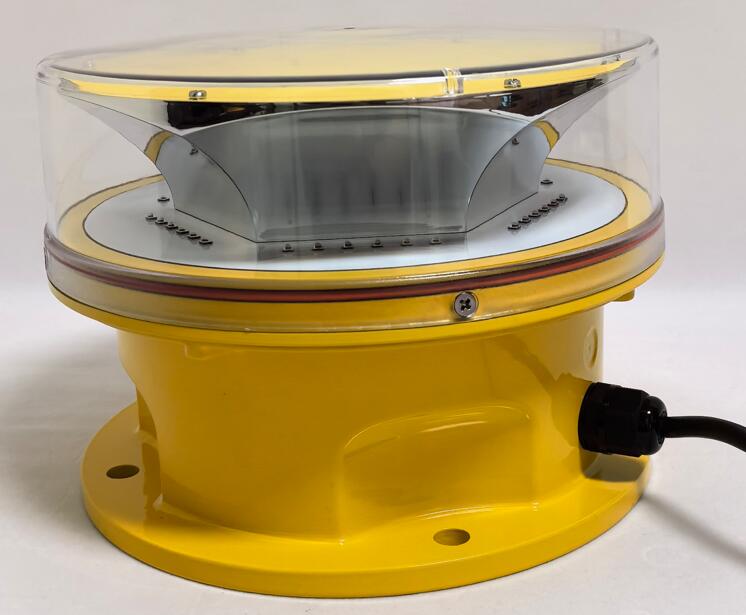Innovative Materials Revolutionizing Aircraft Warning Lights
Aircraft warning lights are critical components in aviation safety, ensuring that tall structures like towers, buildings, and wind turbines are visible to pilots, especially during low-visibility conditions. The effectiveness of these lights depends not only on their design and placement but also on the materials used in their construction. In recent years, advancements in material science have led to the development of innovative materials that enhance the performance, durability, and sustainability of aircraft warning lights. This article explores the latest trends in aircraft warning light materials and their impact on aviation safety.
The Role of Materials in Aircraft Warning Lights
Aircraft warning lights are exposed to harsh environmental conditions, including extreme temperatures, UV radiation, moisture, and mechanical stress. Traditional materials like polycarbonate and acrylic have been widely used due to their transparency and impact resistance. However, these materials have limitations, such as susceptibility to yellowing over time and reduced performance under prolonged exposure to UV light. To address these challenges, researchers and manufacturers are turning to advanced materials that offer superior properties.
Advanced Polymers for Enhanced Durability
One of the most significant breakthroughs in aircraft warning light materials is the development of advanced polymers. These materials are engineered to withstand extreme environmental conditions while maintaining optical clarity. For instance, modified polycarbonates with UV stabilizers have been introduced to prevent yellowing and degradation caused by prolonged exposure to sunlight. Additionally, these polymers exhibit excellent thermal stability, ensuring consistent performance in both high and low temperatures.
Another promising material is cyclic olefin copolymer (COC), which offers high transparency, low moisture absorption, and exceptional resistance to chemicals and UV radiation. COC is increasingly being used in the lenses of aircraft warning lights, as it ensures long-term clarity and reduces the need for frequent maintenance.
Nanomaterials for Improved Performance
Nanotechnology has also made its way into the realm of aircraft warning lights. Nanomaterials, such as nanocomposites, are being incorporated into the construction of these lights to enhance their mechanical and optical properties. For example, the addition of nanoparticles like titanium dioxide or silica to polymer matrices can improve scratch resistance, reduce glare, and increase light transmission efficiency. These improvements are particularly beneficial for high-intensity warning lights, where maximum visibility is crucial.
Moreover, nanomaterials can be used to create self-cleaning surfaces. By applying a nanoscale coating to the lenses of aircraft warning lights, manufacturers can reduce the accumulation of dirt, dust, and water droplets, ensuring that the lights remain visible even in adverse weather conditions.

Sustainable Materials for Eco-Friendly Solutions
As the aviation industry moves toward greater sustainability, the demand for eco-friendly materials in aircraft warning lights has grown. Biodegradable polymers and recycled materials are being explored as alternatives to traditional plastics. For instance, polylactic acid (PLA), a biodegradable polymer derived from renewable resources like corn starch, is being tested for use in warning light components. While PLA may not yet match the durability of conventional materials, ongoing research aims to improve its properties for aviation applications.
| aircraft warning light material |
Recycled polycarbonate is another sustainable option gaining traction. By repurposing post-consumer or post-industrial polycarbonate waste, manufacturers can reduce their environmental footprint without compromising on performance. These materials are particularly appealing for temporary or low-intensity warning lights, where the demand for extreme durability is lower.
Smart Materials for Adaptive Lighting
The integration of smart materials into aircraft warning lights represents a futuristic approach to aviation safety. Smart materials, such as electrochromic polymers, can change their optical properties in response to external stimuli like electrical voltage or light intensity. This capability allows for adaptive warning lights that adjust their brightness or color based on ambient conditions. For example, during daylight, the lights could automatically increase their intensity to remain visible against a bright sky, while at night, they could dim to conserve energy and reduce light pollution.
| aircraft warning light materials |
Shape-memory alloys (SMAs) are another class of smart materials being explored for use in aircraft warning lights. SMAs can change shape in response to temperature changes, enabling the development of lights with movable components that can optimize light distribution or protect the lens during extreme weather events.
Challenges and Future Directions
Despite the promising advancements in aircraft warning light materials , several challenges remain. The high cost of advanced and smart materials can be a barrier to widespread adoption, particularly for smaller-scale projects. Additionally, the long-term performance of these materials in real-world conditions needs to be thoroughly tested to ensure their reliability.
Looking ahead, the focus will likely be on developing materials that strike a balance between performance, cost, and sustainability. Collaboration between material scientists, engineers, and aviation stakeholders will be essential to drive innovation and address the evolving needs of the industry.
The materials used in aircraft warning lights play a pivotal role in ensuring aviation safety. From advanced polymers and nanomaterials to sustainable and smart materials, the field is undergoing a transformation that promises to enhance the durability, efficiency, and environmental friendliness of these critical components. As technology continues to evolve, the future of aircraft warning lights will be shaped by materials that not only meet the demands of modern aviation but also contribute to a safer and more sustainable world.
